The Vertebrates
2nd-3rd grade activities
Nature Observation Journal

When we go outside and practice noticing what's around us, we start to be more aware of all the incredible things happening in nature.
Everyday, try to notice something new outdoors, whether it is a plant, an animal, the sky, or a place in nature.
Record your observations in your nature journal by writing, drawing, painting, or even making up a song.
Sit outside for 10 minutes. What do you hear, smell, see, or feel?
How does the sun feel on your face? How about the breeze?
Did you see the moon yesterday? Can you find it today?
Keep an eye out for a bird nest and write about any activity you notice
Watch a sunset. Then watch one another night. Color your favorite sunset in your journal
Make a list of every animal you see each day
Go on a walk and find your favorite color in nature, and then write a song about it
Add pressed flowers and plants to your pages
Make an outdoor sculpture out of natural materials and draw it in your journal
Lie down and look up at the clouds
Make a treasure map that leads to a good view
Draw yourself sitting in nature
Look at a leaf under a magnifying glass and draw what you see
Interview a tree. What questions do you want to ask it? What would it say if you could hear it?
Color with flower petals, soil, and leaves
Write about a flower you find as if you're talking to an alien who doesn't know what flowers are
Write a thank you letter to a pollinator
Write about what you are grateful for today
Video clip is 3 minutes long.
Your nature journal can be made out of a notebook, sketchbook, or you can create one using materials in your home!
Here's a video with lots of different ideas of how to make your own journal with a handmade cover, blank paper, and school supplies.
Video clip is 4 minutes long.
Click here for more ideas on what to write or draw inside your nature journal!
Scroll down for the next activity
⬇
Neighborhood Food Web
Click here to open and print this activity!

A habitat is where an animal lives in nature. From the ocean coast to the desert, there are many different types of habitats in California! Animals live in habitats that have food, water, shelter, and enough space for them. Plants and animals living in a habitat are connected to each other in a food web.
In this example food web, animals are connected to what they eat, and what eats them in their redwood forest habitat: 
Have you seen any wildlife in your neighborhood? Many wild animals make their home in the urban habitat, which means they live where people live!
Draw your home in the circle below to create your own Neighborhood Food Web!
Then draw lines to connect each animal to all of the different types of food it eats.
Can you find any animals below that eat mostly plants?
Which animals eat mostly other animals?
Which animals eat both plants and other animals?
Click here to view the answers. Try to think of the possible food web connections before peeking at the answers!
Scroll down for the next activity
⬇

Vocabulary Puzzles
Click here to open and print this activity!
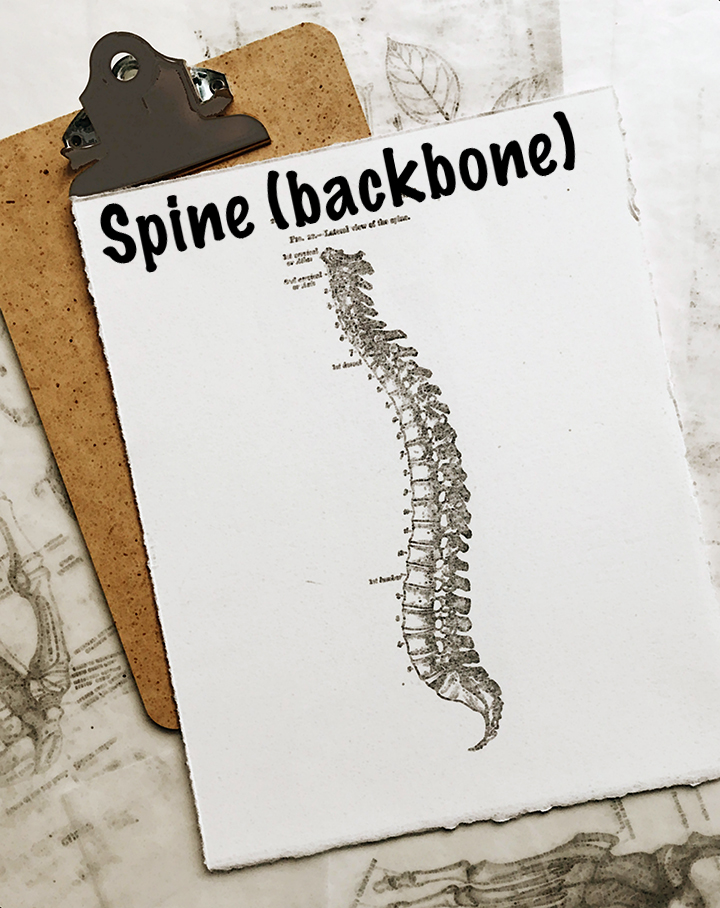
All of the animals WildCare will teach about have something in common with us. They are called vertebrates which means they have a backbone.
You have a backbone, which means you are a vertebrate, too! Scientists group vertebrates with similar features and characteristics into different classes.
Fill in the missing vowels to find out the names of the 5 different vertebrate classes! Then search for the camouflaged wildlife words on the next page.
Click here to view the answers. Try to solve the puzzles before peeking at the answers!
Scroll down for the next activity
⬇
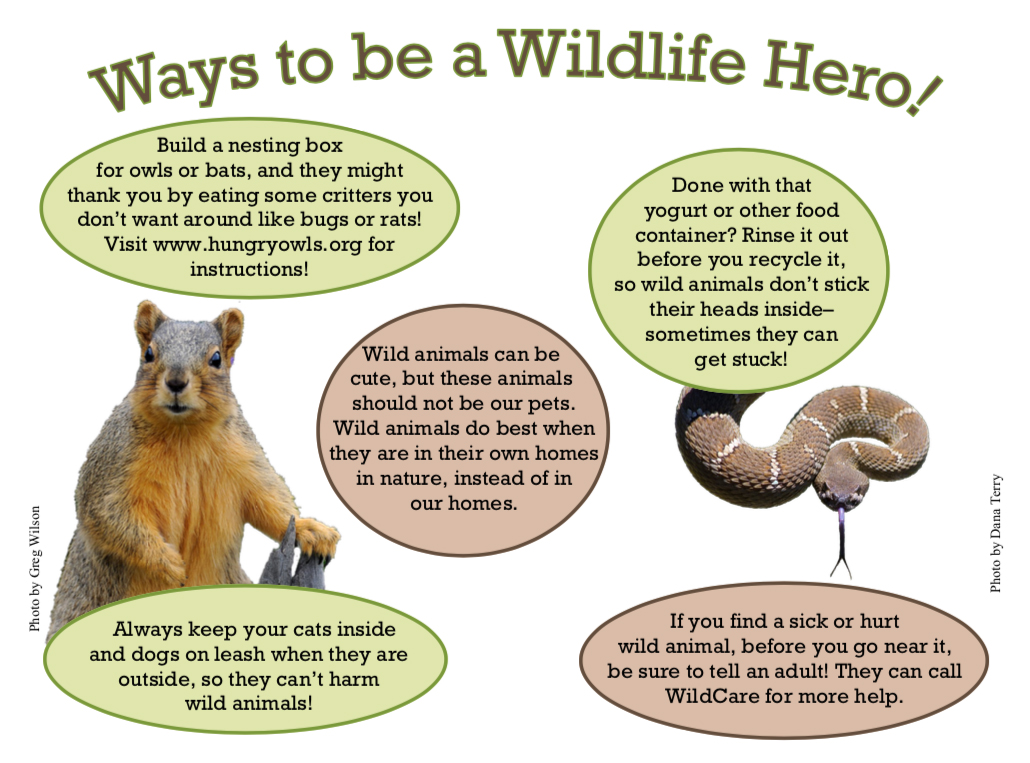
Vertebrate Classes
Click here to open and print this activity!
We live with all sorts of animals in California! Scientists like to classify these animals by their similarities.
Uh-oh! Some of the classes below got mixed up.
Draw an X on the animal that doesn't belong in each class.
When you’re done, fill in the name of the classes with either:
Fish, Amphibians, Reptiles, Birds, or Mammals.
Click here to view the answers. Try to fix the mix-up before peeking at the answers!
That's the end of our pre-visit activities!
Scroll down for the post-visit activities
⬇
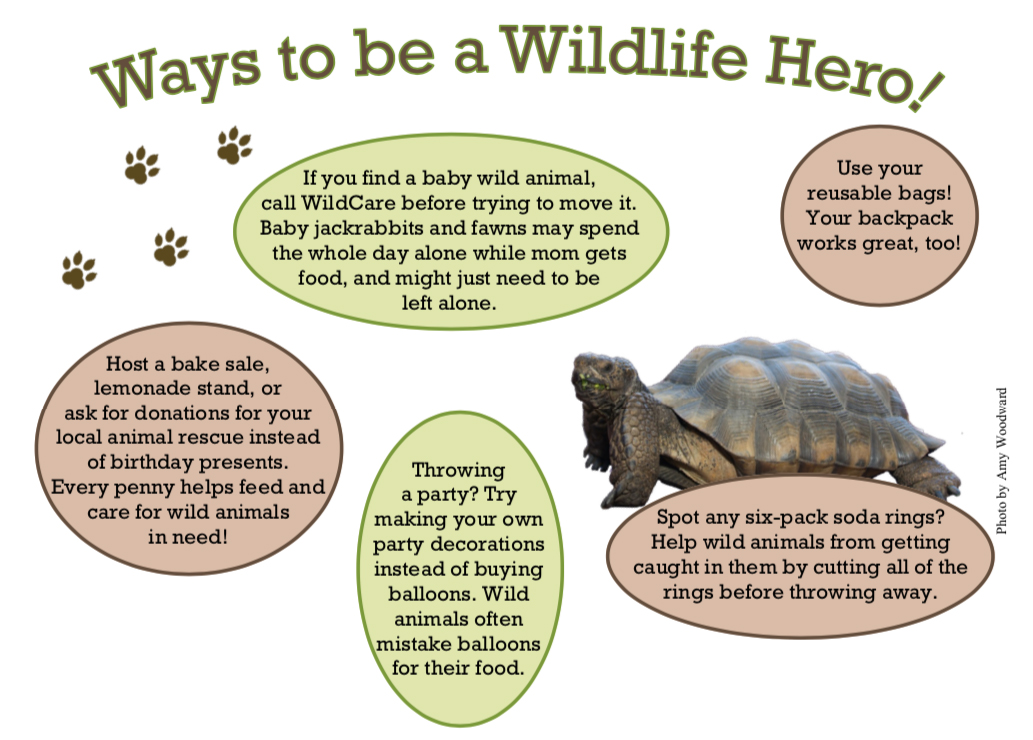
Create a New Mammal Species
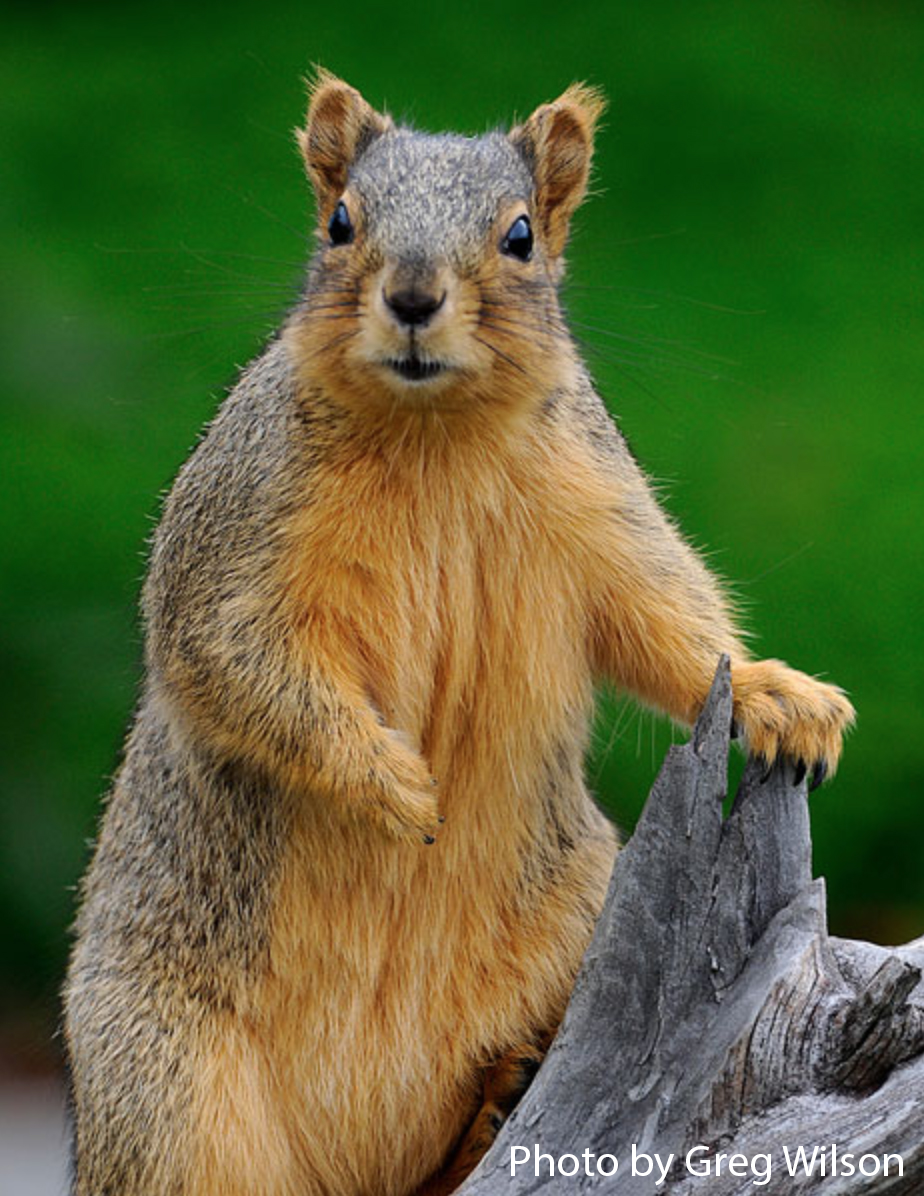 Congratulations!
Congratulations!
You've discovered a new mammal species!
Now you get to tell the whole world about what makes this new species unique.
Mammals have many different kinds of ears, noses, limbs, tails, behaviors, and other adaptations that help them survive in their habitats. Below are examples of different mammal adaptations, as well as questions to think about as you share this new mammal species.

Questions to think about:
Where does it live? Out at sea, near ponds, high up on rocky cliffs, deep in the forest, in burrows, underground, or somewhere completely different?
What adaptations does it have? How does the shape of its ears, nose, limbs, and tail help it survive in its habitat?
What does it eat? Seeds, insects, berries, fish, other animals?
How do the colors or patterns of its fur help it camouflage in its habitat?
Will it live here in California, or does it need to travel greater distances?
Click here to open and print the template to draw your mammal!
Bonus challenge!
Can you make a 3D sculpture of your newly discovered mammal species?Scroll down for the next activity
⬇
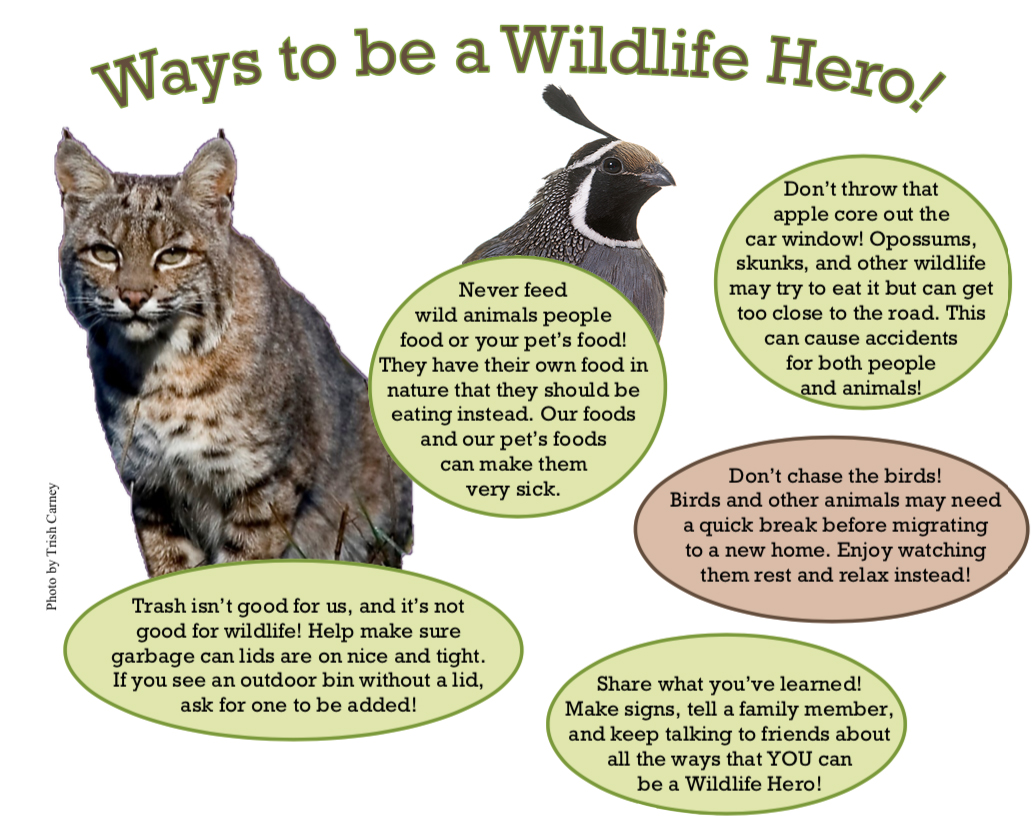
Baby Animal Memory Game
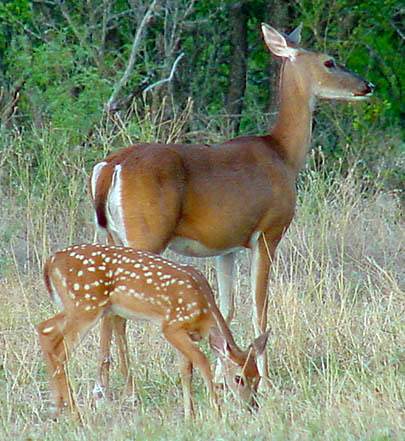
Some baby animals look just like smaller versions of the adult animals, but other babies may look completely different. Watch the video to see how many baby striped skunks came to WildCare's Wildlife Hospital in one day.
Then learn some fun facts about wildlife and their babies below, and play a game of Memory and Matching!
Video clip is 1 minute long.
In the next video, the skunks are almost grown, but we need to make sure they have the skills they'll use to survive in the wild. Learning to pounce on insects is an important skill, so we gave our young skunks a cricket hunt!
Video clip is 1 minute long.
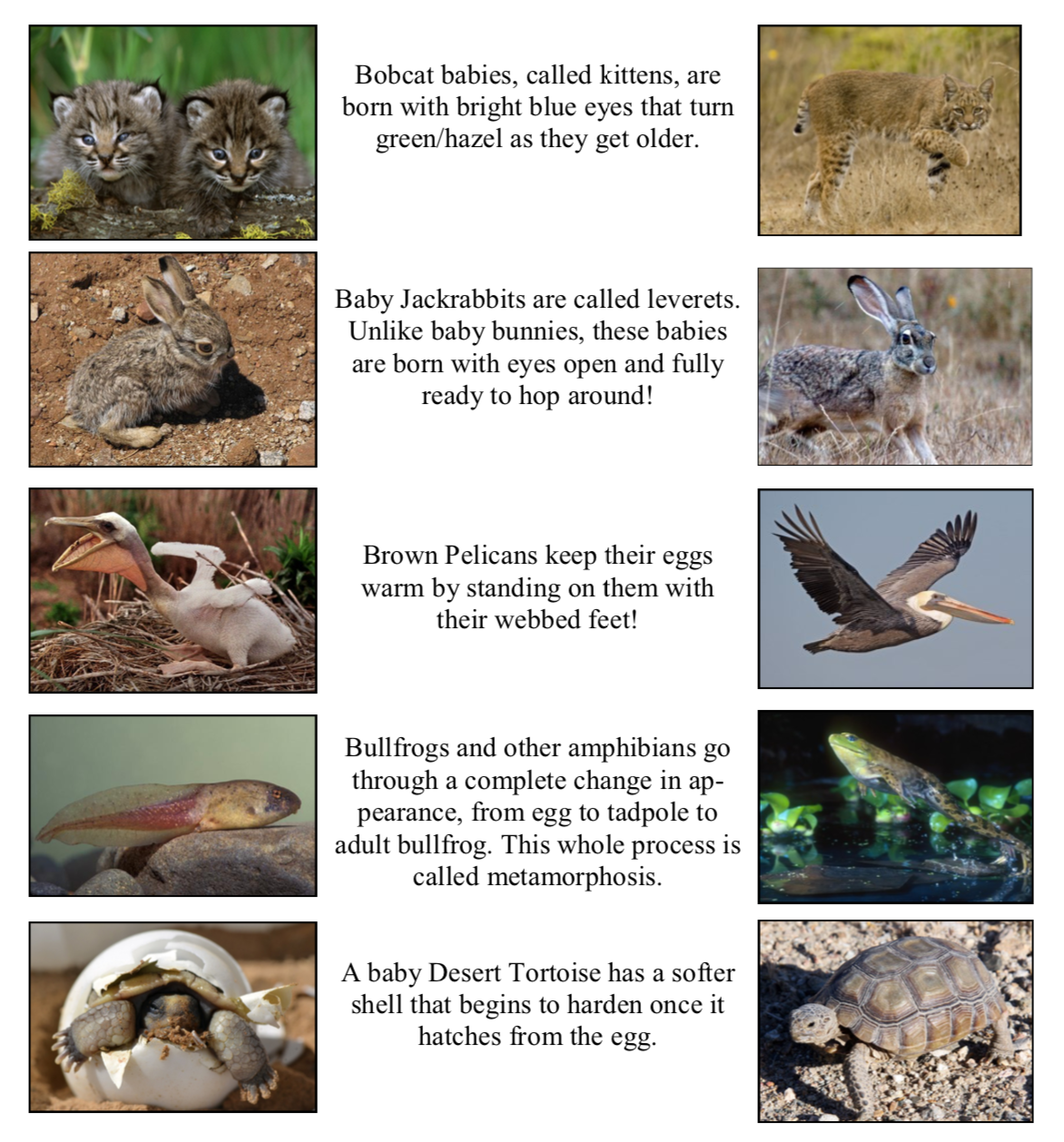
Now that you've learned some fun facts about wildlife and their babies, you can print and cut out the animal cards below to play a game of Memory and Matching!
Here's what you will need:
✅ Click here to open and print the animal cards,Cut out all 24 photos linked below. Cut along the lines so all squares are the same size.
Place all photos face down in no particular order.
The first person takes a turn picking 2 photos to flip over— if it is a matching baby/adult pair, that person gets to keep those cards, and try again! The turn is over when 2 photos are picked that do not match.
Whoever matches the most pairs wins!
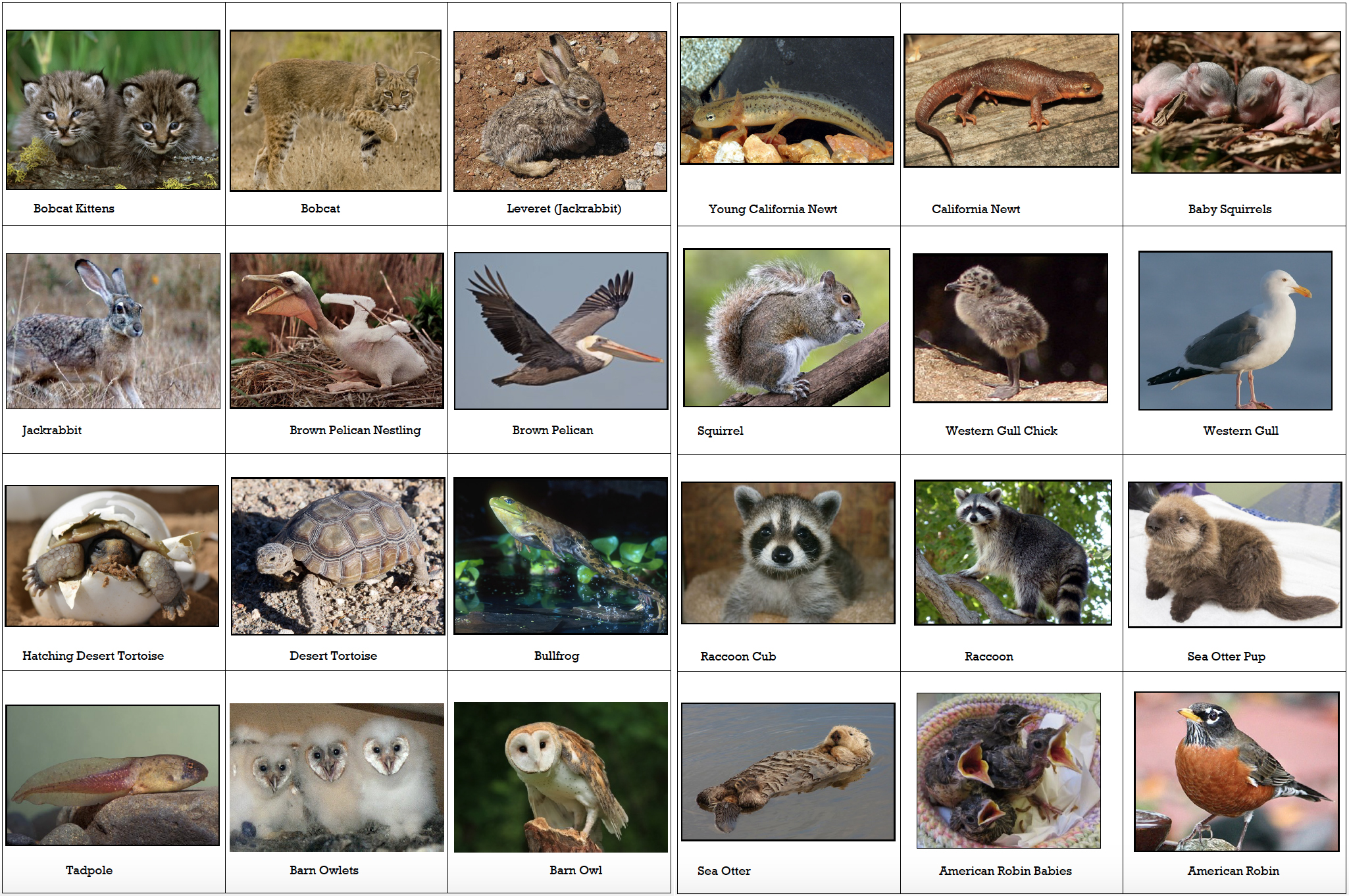 Click here to open and print the Baby Animal Memory Game Cards
Click here to open and print the Baby Animal Memory Game Cards
You can help wildlife by trying some of these ideas at home to make sure baby animals stay safe in your neighborhood!
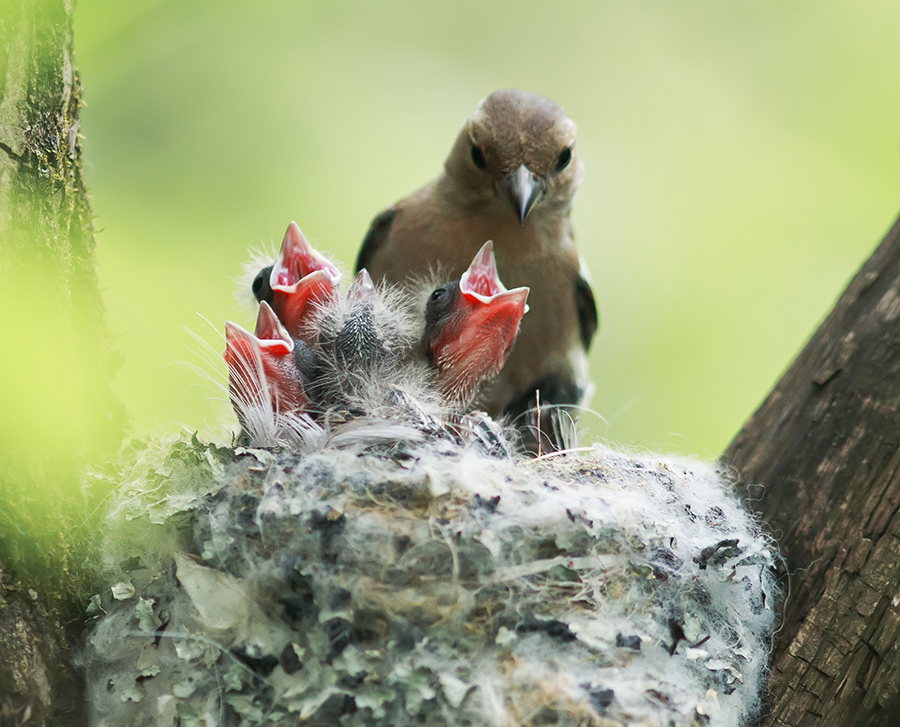
Keep your dog on a leash when you go on a walk so that he doesn't suddenly chase wildlife.
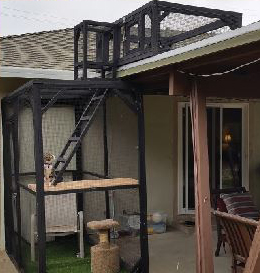
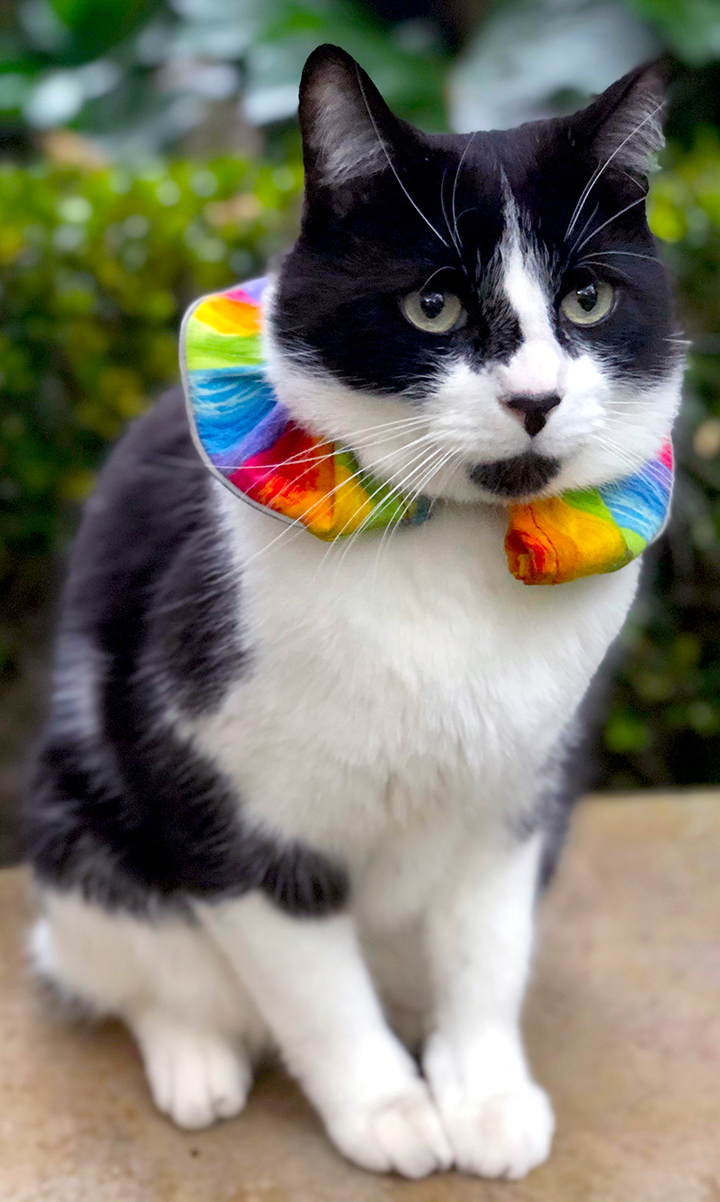
Keep your cats indoors if you can, or try some of WildCare's recommendations for making sure your outdoor cat doesn't kill backyard birds. Give your cat a special collar that makes her more visible to birds, or build her a safe "Catio" (cat-patio!).
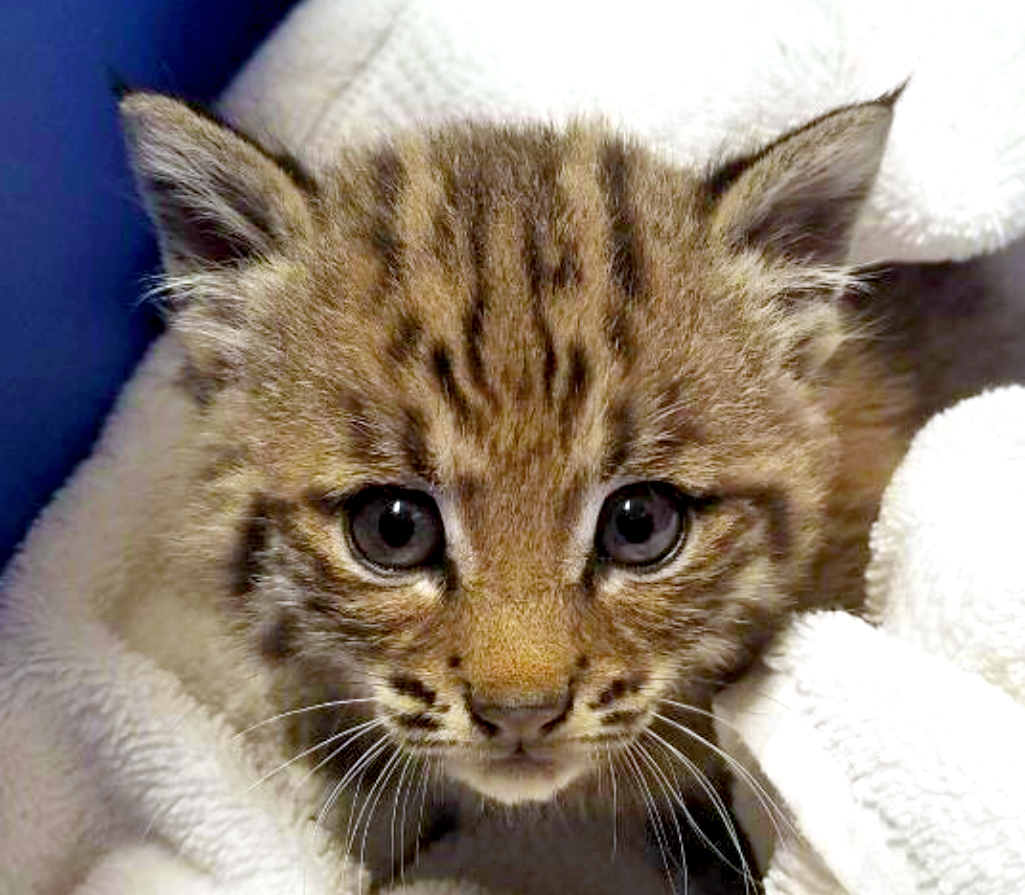
As cute as this bobcat kitten might look, wildlife should never be taken as pets. Let wildlife live wild and free in their habitat.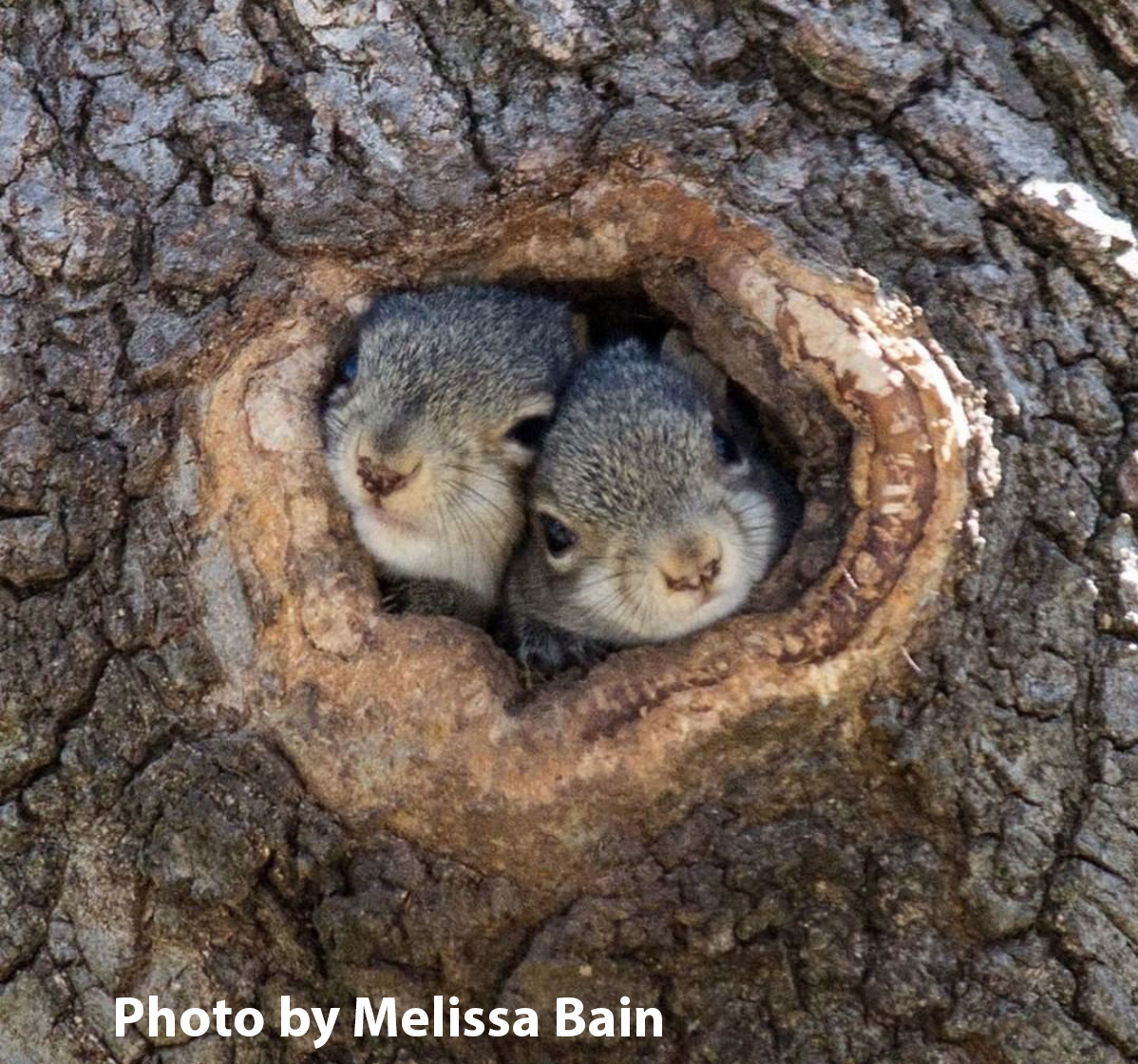
Remind your adults to NOT trim trees and bushes during the Spring and Summer, because that is nesting season for birds and squirrels.
Call WildCare if you see a baby 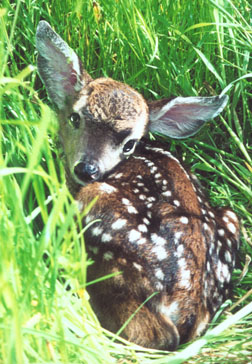 animal without its parent. We can help you figure out if it is perfectly fine or if it actually needs our help. Animals like deer and jackrabbits will leave their babies in one spot during the day while they go out and find food. Baby birds will spend some time on the ground before they can fly.
animal without its parent. We can help you figure out if it is perfectly fine or if it actually needs our help. Animals like deer and jackrabbits will leave their babies in one spot during the day while they go out and find food. Baby birds will spend some time on the ground before they can fly.
Scroll down for the next activity
⬇
Birds and Windows
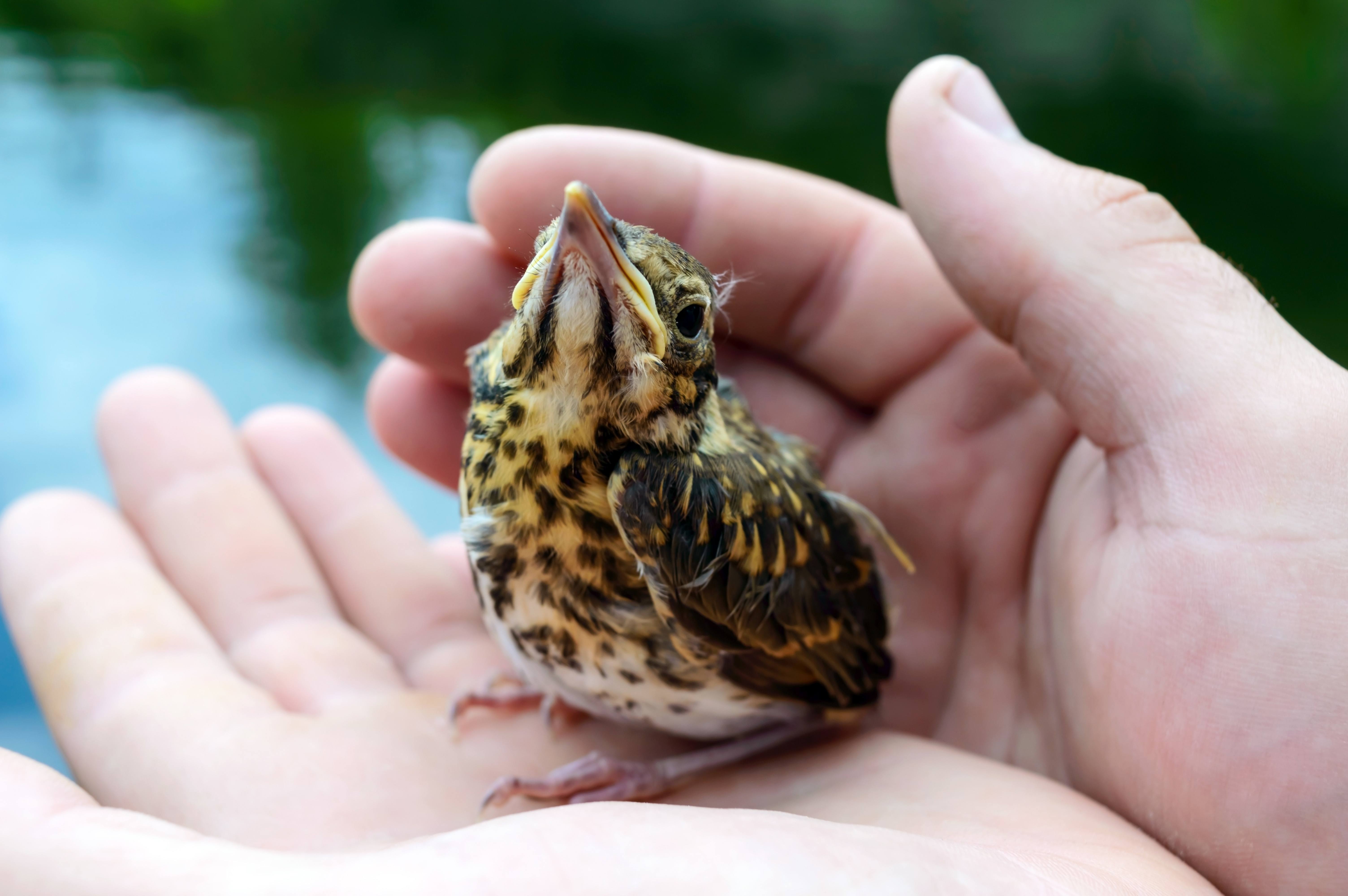
Help wild birds around your home stay safe with this easy Nature Super Hero activity!
Simply create hawk-shaped cut-outs to display in windows that will discourage birds from flying into them and causing injury.
Why do birds fly into windows? When birds are looking at the window, they see the reflection of the sky or trees instead of a pane of glass. They think they're following a clear flight path. That mistake can be deadly; at least half of the birds who hit windows die from injuries or because another animal preyed upon them while the bird was stunned.

Here's what you will need for this activity:
✅ Click here to open and print the hawk shape,Carefully cut out the hawk shape.
Decorate the white side of your hawk cut-out however you like, by drawing, coloring, or collaging on it.
Tape the hawk to the inside of your window so that the black side of the cut-out faces outside, and the decorated side faces inside.
Adding multiple bird shapes to your window with at least 4 inches of space between them is more effective at preventing birds from accidentally flying into it. You can even make a whole habitat scene on your window!
Have fun making your windows safe for birds!
The wild Turkey in this video flew right through a glass window! Fortunately his injuries were mostly superficial, so WildCare's Medical Staff was able to release him back to his home territory after only one night in care. Watch as he returns to the wild!
Video clip is 40 seconds long.
That's the end of our post-visit activities!
We hope you had fun!
You can open and print the Ways to be a Wildlife Hero idea bubbles that appear throughout this page by clicking below!
